- Home
- Advanced Packaging
- Anti-Counterfeiting Packaging Market Size, Future Growth and Forecast 2033
Anti-Counterfeiting Packaging Market Size, Future Growth and Forecast 2033
Anti-Counterfeiting Packaging Market Segments - by Technology (RFID, Holograms, Barcodes, Watermarks), Application (Food & Beverages, Pharmaceuticals, Electronics, Clothing & Apparel, Others), Material (Paper & Paperboard, Plastic, Metal, Glass), End-User (Manufacturers, Retailers, Government Agencies, Consumers) - Market Dynamics, Growth Opportunities, Strategic Drivers, and PESTLE Outlook (2025–2033)
Anti-Counterfeiting Packaging Market Outlook
The Anti-Counterfeiting Packaging market was valued at $105 billion in 2024 and is projected to reach $182 billion by 2033, growing at a CAGR of 6.5% during the forecast period 2025–2033. This market is driven by the increasing need for brand protection and the rising incidences of counterfeiting across various industries. The demand for anti-counterfeiting packaging solutions is particularly high in sectors such as pharmaceuticals, food and beverages, and electronics, where the authenticity of products is crucial for consumer safety and brand integrity. The adoption of advanced technologies like RFID, holograms, and barcodes is enhancing the effectiveness of these packaging solutions, thereby boosting market growth.

However, the market faces challenges such as high implementation costs and the complexity of integrating anti-counterfeiting technologies into existing packaging systems. Regulatory frameworks across different regions also pose a challenge, as they require compliance with various standards and certifications, which can be both time-consuming and costly. Despite these challenges, the market holds significant growth potential due to the increasing awareness among consumers and manufacturers about the importance of product authenticity and the benefits of anti-counterfeiting packaging solutions.
Report Scope
| Attributes | Details |
| Report Title | Anti-Counterfeiting Packaging Market Size, Future Growth and Forecast 2033 |
| Base Year | 2024 |
| Historic Data | 2017-2023 |
| Forecast Period | 2025-2033 |
| Number of Pages | 138 |
| Technology | RFID, Holograms, Barcodes, Watermarks |
| Application | Food & Beverages, Pharmaceuticals, Electronics, Clothing & Apparel, Others |
| Material | Paper & Paperboard, Plastic, Metal, Glass |
| End-User | Manufacturers, Retailers, Government Agencies, Consumers |
| Customization Available | Yes* |
Opportunities & Threats
The Anti-Counterfeiting Packaging market presents numerous opportunities, particularly with the growing e-commerce sector. As online shopping continues to rise, so does the risk of counterfeit products entering the supply chain. This creates a substantial opportunity for anti-counterfeiting packaging solutions to ensure product authenticity and build consumer trust. Additionally, the increasing focus on sustainability is driving innovation in eco-friendly anti-counterfeiting packaging materials, offering new avenues for market growth. Companies are investing in research and development to create sustainable packaging solutions that not only prevent counterfeiting but also reduce environmental impact.
Another significant opportunity lies in the pharmaceutical industry, where the demand for anti-counterfeiting packaging is expected to surge. With stringent regulations and the critical need to ensure patient safety, pharmaceutical companies are increasingly adopting advanced packaging technologies to combat counterfeiting. This trend is further supported by government initiatives aimed at enhancing drug safety and supply chain transparency. The integration of blockchain technology in anti-counterfeiting packaging is also gaining traction, providing a secure and transparent way to track and verify products throughout the supply chain.
Despite these opportunities, the market faces certain restrainers, such as the high cost of implementing advanced anti-counterfeiting technologies. Small and medium-sized enterprises (SMEs) may find it challenging to invest in these solutions due to budget constraints. Additionally, the lack of standardization across different regions can hinder the widespread adoption of anti-counterfeiting packaging solutions. Companies need to navigate varying regulatory requirements, which can be complex and time-consuming, potentially slowing down market growth.
Market Share Analysis
The competitive landscape of the Anti-Counterfeiting Packaging market is characterized by the presence of several key players who are actively engaged in product innovation and strategic partnerships to strengthen their market position. The market is moderately fragmented, with companies focusing on expanding their product portfolios and enhancing their technological capabilities to gain a competitive edge. The leading players in the market are investing heavily in research and development to introduce innovative solutions that cater to the evolving needs of various industries.

Among the major companies in the market, Avery Dennison Corporation holds a significant market share due to its extensive range of anti-counterfeiting solutions and strong global presence. The company is known for its innovative labeling technologies that provide enhanced security features for various applications. Similarly, CCL Industries Inc. is a prominent player in the market, offering a wide array of security labels and packaging solutions that cater to diverse industry needs.
Another key player, 3M Company, is renowned for its advanced anti-counterfeiting technologies, including holograms and RFID solutions. The company's strong focus on research and development has enabled it to introduce cutting-edge products that address the growing demand for secure packaging solutions. Additionally, SICPA Holdings SA is a leading provider of security inks and solutions, known for its expertise in developing high-security features for packaging applications.
Other notable companies in the market include DuPont de Nemours, Inc., which offers a range of innovative packaging materials and technologies designed to prevent counterfeiting. The company's strong emphasis on sustainability and innovation has positioned it as a key player in the market. Similarly, Zebra Technologies Corporation is recognized for its advanced barcode and RFID solutions that enhance product traceability and security.
Key Highlights
- The Anti-Counterfeiting Packaging market is projected to grow at a CAGR of 6.5% from 2025 to 2033.
- Increasing demand for secure packaging solutions in the pharmaceutical and food & beverage industries is driving market growth.
- Technological advancements such as RFID, holograms, and blockchain are enhancing the effectiveness of anti-counterfeiting packaging.
- The rise of e-commerce is creating new opportunities for anti-counterfeiting packaging solutions.
- High implementation costs and regulatory challenges are key restrainers for market growth.
- Companies are focusing on sustainable packaging solutions to meet consumer demand for eco-friendly products.
- North America and Europe are leading markets due to stringent regulations and high consumer awareness.
- Asia Pacific is expected to witness significant growth due to increasing industrialization and rising counterfeit activities.
- Strategic partnerships and collaborations are key strategies adopted by market players to enhance their market presence.
Top Countries Insights
In the Anti-Counterfeiting Packaging market, the United States holds a significant share, with a market size of $28 billion and a CAGR of 5%. The country's stringent regulations and high consumer awareness drive the demand for advanced packaging solutions. The presence of major market players and continuous technological advancements further bolster market growth.

China is another key market, with a market size of $22 billion and a CAGR of 8%. The rapid industrialization and increasing counterfeit activities in the region are major growth drivers. The government's focus on enhancing product safety and supply chain transparency is also contributing to market expansion.
Germany, with a market size of $15 billion and a CAGR of 6%, is a leading market in Europe. The country's strong manufacturing sector and emphasis on product quality and safety drive the demand for anti-counterfeiting packaging solutions. The presence of advanced technology providers further supports market growth.
India, with a market size of $10 billion and a CAGR of 9%, is witnessing significant growth due to the increasing awareness about product authenticity and the rising demand for secure packaging solutions in the pharmaceutical and food & beverage industries.
Japan, with a market size of $8 billion and a CAGR of 4%, is a mature market with a strong focus on technological innovation and product safety. The country's advanced manufacturing capabilities and high consumer awareness drive the demand for anti-counterfeiting packaging solutions.
Evolving Market Dynamics (2018–2024) and Strategic Foresight (2025–2033)
The Anti-Counterfeiting Packaging market has undergone significant changes from 2018 to 2024, with a focus on technological advancements and increasing consumer awareness. During this period, the market experienced a steady growth rate, driven by the rising demand for secure packaging solutions across various industries. The adoption of technologies such as RFID, holograms, and barcodes played a crucial role in enhancing the effectiveness of anti-counterfeiting packaging solutions.
Looking ahead to the period from 2025 to 2033, the market is expected to witness accelerated growth, with a focus on sustainability and innovation. The integration of blockchain technology and the development of eco-friendly packaging materials are anticipated to drive market expansion. The increasing emphasis on supply chain transparency and product authenticity will further boost the demand for advanced anti-counterfeiting packaging solutions.
In terms of regional contributions, North America and Europe are expected to maintain their leading positions, driven by stringent regulations and high consumer awareness. However, the Asia Pacific region is projected to witness the highest growth rate, fueled by rapid industrialization and increasing counterfeit activities. The market dynamics during this period will be characterized by strategic partnerships and collaborations among key players to enhance their market presence and technological capabilities.
Anti-Counterfeiting Packaging Market Segments Insights

Technology Analysis
The technology segment of the Anti-Counterfeiting Packaging market is dominated by RFID, holograms, barcodes, and watermarks. RFID technology is gaining traction due to its ability to provide real-time tracking and verification of products throughout the supply chain. This technology is particularly popular in the pharmaceutical and electronics industries, where product authenticity and traceability are critical. Holograms, on the other hand, are widely used in the food and beverage industry due to their visual appeal and ease of integration into existing packaging systems. Barcodes and watermarks continue to be popular choices due to their cost-effectiveness and ease of implementation.
The adoption of these technologies is driven by the increasing need for secure packaging solutions to combat the growing threat of counterfeiting. Companies are investing in research and development to enhance the capabilities of these technologies and introduce innovative solutions that cater to the evolving needs of various industries. The integration of blockchain technology with RFID and barcodes is also gaining traction, providing a secure and transparent way to track and verify products throughout the supply chain.
Application Analysis
The application segment of the Anti-Counterfeiting Packaging market includes food & beverages, pharmaceuticals, electronics, clothing & apparel, and others. The pharmaceutical industry is a major contributor to market growth, driven by the critical need to ensure patient safety and comply with stringent regulations. The demand for anti-counterfeiting packaging solutions in this industry is expected to surge, supported by government initiatives aimed at enhancing drug safety and supply chain transparency.
The food and beverage industry is another key application area, with increasing consumer awareness about product authenticity driving the demand for secure packaging solutions. The electronics industry is also witnessing significant growth, as manufacturers seek to protect their products from counterfeiting and maintain brand integrity. The clothing and apparel industry is adopting anti-counterfeiting packaging solutions to combat the growing threat of counterfeit products entering the market.
Material Analysis
The material segment of the Anti-Counterfeiting Packaging market includes paper & paperboard, plastic, metal, and glass. Paper & paperboard is the most widely used material, due to its cost-effectiveness and ease of integration with various anti-counterfeiting technologies. The demand for eco-friendly packaging solutions is driving the adoption of sustainable materials, such as recycled paper and biodegradable plastics, in the market.
Plastic is another popular material, known for its durability and versatility. The use of advanced plastic materials with integrated security features is gaining traction, particularly in the food and beverage and pharmaceutical industries. Metal and glass are also used in specific applications, where high levels of security and durability are required. The choice of material is influenced by factors such as cost, environmental impact, and the specific security requirements of the application.
End-User Analysis
The end-user segment of the Anti-Counterfeiting Packaging market includes manufacturers, retailers, government agencies, and consumers. Manufacturers are the primary end-users, as they seek to protect their products from counterfeiting and maintain brand integrity. The demand for anti-counterfeiting packaging solutions among manufacturers is driven by the increasing threat of counterfeit products and the need to comply with regulatory requirements.
Retailers are also significant end-users, as they aim to ensure the authenticity of the products they sell and build consumer trust. Government agencies play a crucial role in the market, as they implement regulations and initiatives to combat counterfeiting and enhance product safety. Consumers are becoming increasingly aware of the importance of product authenticity, driving the demand for secure packaging solutions that provide assurance of product quality and safety.
Anti-Counterfeiting Packaging Market Segments
The Anti-Counterfeiting Packaging market has been segmented on the basis of
Technology
- RFID
- Holograms
- Barcodes
- Watermarks
Application
- Food & Beverages
- Pharmaceuticals
- Electronics
- Clothing & Apparel
- Others
Material
- Paper & Paperboard
- Plastic
- Metal
- Glass
End-User
- Manufacturers
- Retailers
- Government Agencies
- Consumers
Primary Interview Insights
What are the key drivers for the Anti-Counterfeiting Packaging market?
What challenges does the market face?
Which industries are the major contributors to market growth?
How is sustainability impacting the market?
What role does technology play in this market?
Latest Reports

The Anti-Counterfeiting Packaging market was valued at $105 billion in 2024 and is projected to reach $182 billion by 2033, growing at a CAGR of 6.5% during the forecast period 2025–2033.

The Active and Modified Atmospheric Packaging market was valued at $15.2 billion in 2024 and is projected to reach $25.8 billion by 2033, growing at a CAGR of 6.5% during the forecast period 2025–2033.

The molded fiber packaging market was valued at $7.5 billion in 2024 and is projected to reach $12.3 billion by 2033, growing at a CAGR of 5.8% during the forecast period 2025–2033.

The micro packaging market was valued at $1.2 billion in 2024 and is projected to reach $2.5 billion by 2033, growing at a CAGR of 8.5% during the forecast period 2025–2033.

The Anti-counterfeit Pharmaceuticals Packaging market was valued at $80 billion in 2024 and is projected to reach $150 billion by 2033, growing at a CAGR of 7.5% during the forecast period 2025–2033.
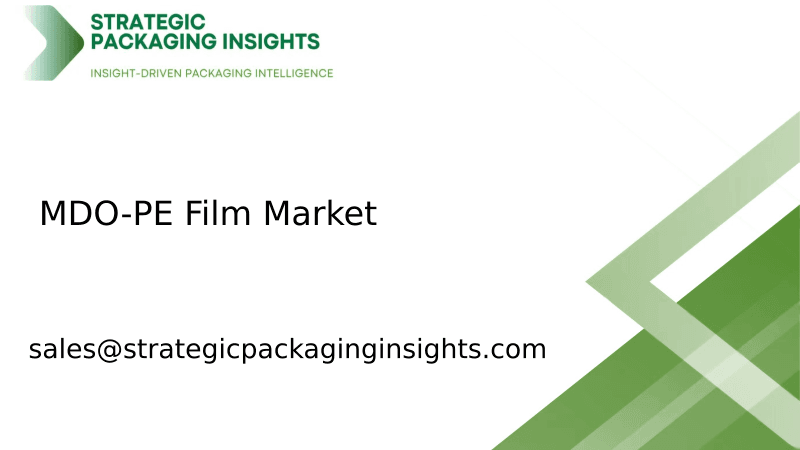
The MDO-PE Film market was valued at $3.5 billion in 2024 and is projected to reach $5.8 billion by 2033, growing at a CAGR of 5.2% during the forecast period 2025–2033.

The compostable pouch market was valued at $1.2 billion in 2024 and is projected to reach $3.5 billion by 2033, growing at a CAGR of 12.5% during the forecast period 2025–2033.

The Smart Packaging market was valued at $23.5 billion in 2024 and is projected to reach $43.5 billion by 2033, growing at a CAGR of 7.2% during the forecast period 2025–2033.

The pharmaceutical glass packaging market was valued at $14.5 billion in 2024 and is projected to reach $22.3 billion by 2033, growing at a CAGR of 4.9% during the forecast period 2025–2033.

The tray liners market was valued at $1.2 billion in 2024 and is projected to reach $2.3 billion by 2033, growing at a CAGR of 6.5% during the forecast period 2025–2033.

The Fan-Out Wafer Level Packaging (FOWLP) market was valued at $1.5 billion in 2024 and is projected to reach $4.2 billion by 2033, growing at a CAGR of 12.5% during the forecast period 2025–2033.
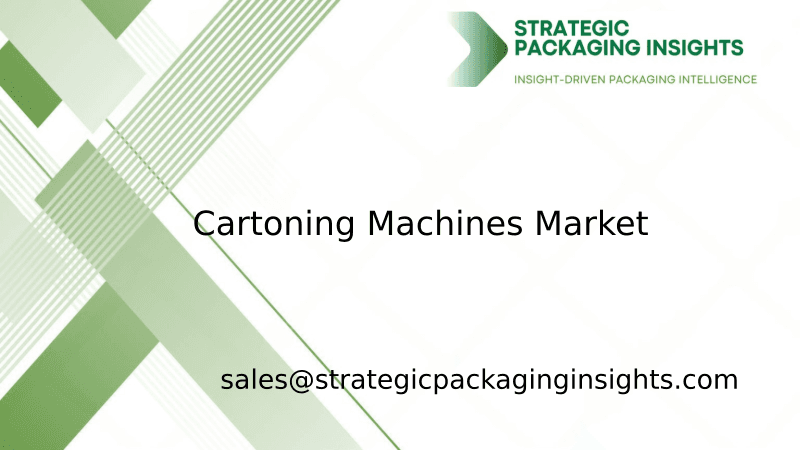
The cartoning machines market was valued at $3.5 billion in 2024 and is projected to reach $5.2 billion by 2033, growing at a CAGR of 4.5% during the forecast period 2025–2033.
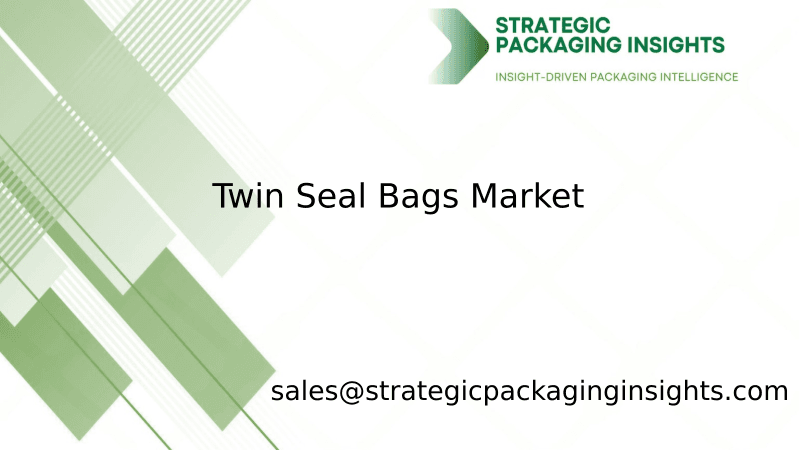
The Twin Seal Bags market was valued at $1.2 billion in 2024 and is projected to reach $2.3 billion by 2033, growing at a CAGR of 7.1% during the forecast period 2025–2033.
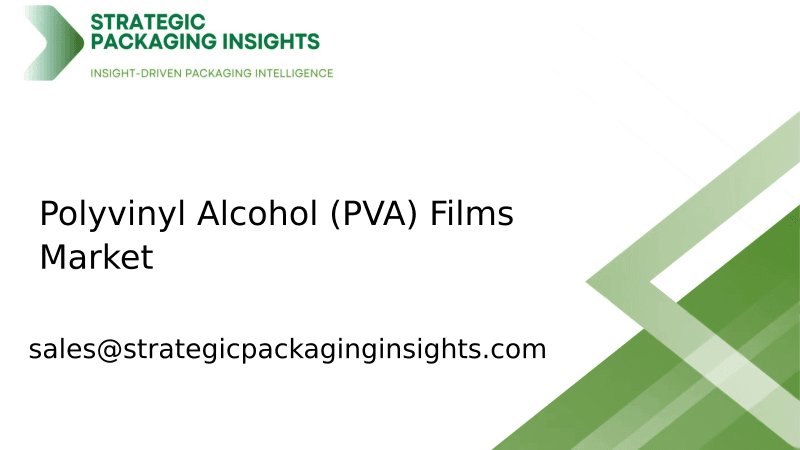
The Polyvinyl Alcohol (PVA) Films market was valued at $3.5 billion in 2024 and is projected to reach $5.8 billion by 2033, growing at a CAGR of 5.2% during the forecast period 2025–2033.

The Ready-To-Eat Product Packaging market was valued at $95 billion in 2024 and is projected to reach $145 billion by 2033, growing at a CAGR of 4.8% during the forecast period 2025–2033.

The Anti-Counterfeit Packaging market was valued at $105 billion in 2024 and is projected to reach $184 billion by 2033, growing at a CAGR of 6.5% during the forecast period 2025–2033.

The thermoformed skin packaging market was valued at $8.5 billion in 2024 and is projected to reach $13.2 billion by 2033, growing at a CAGR of 5.2% during the forecast period 2025–2033.
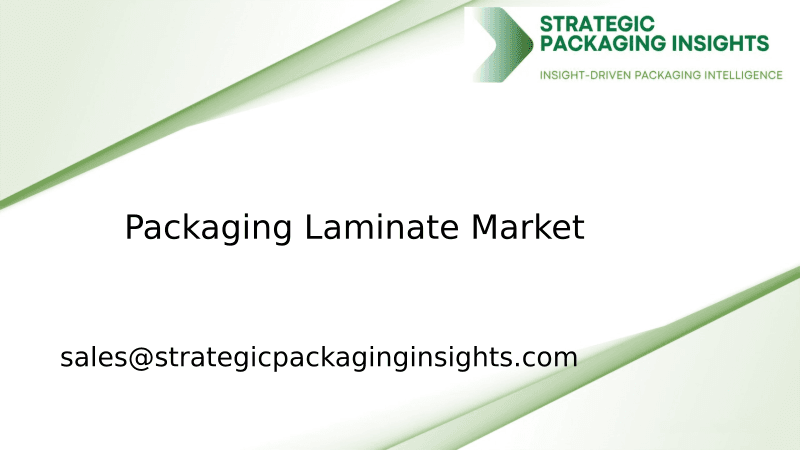
The packaging laminate market was valued at $25 billion in 2024 and is projected to reach $40 billion by 2033, growing at a CAGR of 5.5% during the forecast period 2025–2033.

The recycled cardboard market was valued at $8.5 billion in 2024 and is projected to reach $12.3 billion by 2033, growing at a CAGR of 4.2% during the forecast period 2025-2033.
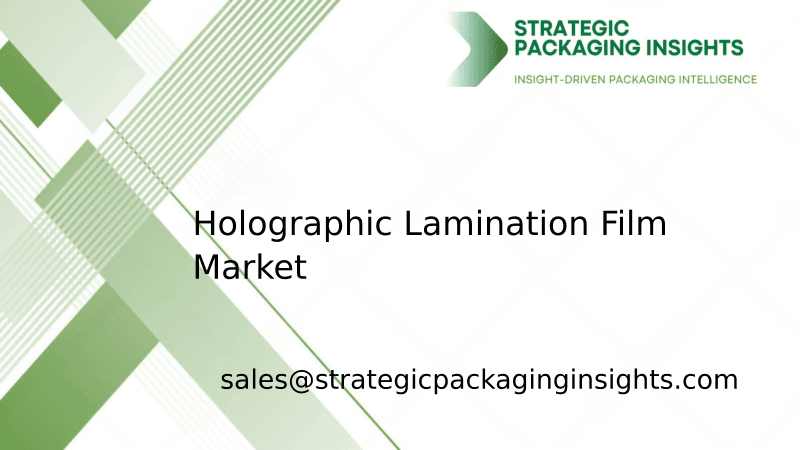
The holographic lamination film market was valued at $2.5 billion in 2024 and is projected to reach $4.8 billion by 2033, growing at a CAGR of 7.2% during the forecast period 2025-2033.

The Horizontal Continuous Band Sealer market was valued at $1.2 billion in 2024 and is projected to reach $2.3 billion by 2033, growing at a CAGR of 7.1% during the forecast period 2025-2033.

The Orbital Stretch Wrapper market was valued at $1.2 billion in 2024 and is projected to reach $2.5 billion by 2033, growing at a CAGR of 8.5% during the forecast period 2025-2033.

The confectionery and bakery packaging market was valued at $25 billion in 2024 and is projected to reach $40 billion by 2033, growing at a CAGR of 5.5% during the forecast period 2025-2033.
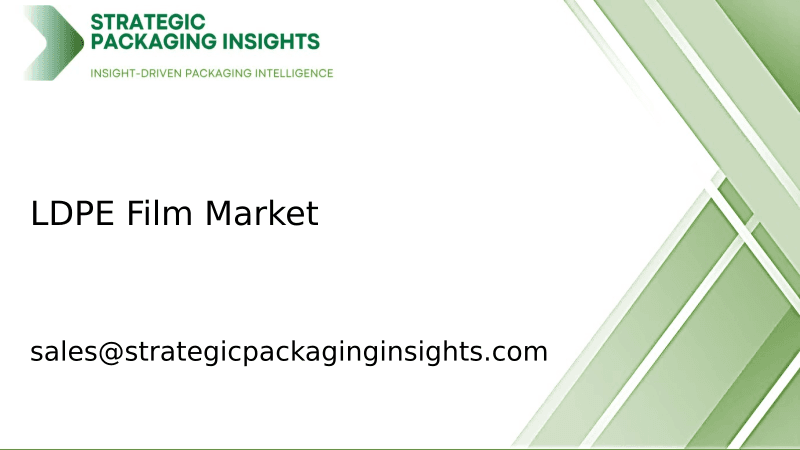
The LDPE Film market was valued at $35 billion in 2024 and is projected to reach $50 billion by 2033, growing at a CAGR of 4.2% during the forecast period 2025–2033.

The Bottle Case Packer market was valued at $1.2 billion in 2024 and is projected to reach $2.3 billion by 2033, growing at a CAGR of 7.1% during the forecast period 2025-2033.

The Anti-Counterfeiting Packaging market was valued at $105 billion in 2024 and is projected to reach $182 billion by 2033, growing at a CAGR of 6.5% during the forecast period 2025–2033.

The Active and Modified Atmospheric Packaging market was valued at $15.2 billion in 2024 and is projected to reach $25.8 billion by 2033, growing at a CAGR of 6.5% during the forecast period 2025–2033.

The molded fiber packaging market was valued at $7.5 billion in 2024 and is projected to reach $12.3 billion by 2033, growing at a CAGR of 5.8% during the forecast period 2025–2033.

The micro packaging market was valued at $1.2 billion in 2024 and is projected to reach $2.5 billion by 2033, growing at a CAGR of 8.5% during the forecast period 2025–2033.

The Anti-counterfeit Pharmaceuticals Packaging market was valued at $80 billion in 2024 and is projected to reach $150 billion by 2033, growing at a CAGR of 7.5% during the forecast period 2025–2033.

The MDO-PE Film market was valued at $3.5 billion in 2024 and is projected to reach $5.8 billion by 2033, growing at a CAGR of 5.2% during the forecast period 2025–2033.

The compostable pouch market was valued at $1.2 billion in 2024 and is projected to reach $3.5 billion by 2033, growing at a CAGR of 12.5% during the forecast period 2025–2033.

The Smart Packaging market was valued at $23.5 billion in 2024 and is projected to reach $43.5 billion by 2033, growing at a CAGR of 7.2% during the forecast period 2025–2033.

The pharmaceutical glass packaging market was valued at $14.5 billion in 2024 and is projected to reach $22.3 billion by 2033, growing at a CAGR of 4.9% during the forecast period 2025–2033.

The tray liners market was valued at $1.2 billion in 2024 and is projected to reach $2.3 billion by 2033, growing at a CAGR of 6.5% during the forecast period 2025–2033.

The Fan-Out Wafer Level Packaging (FOWLP) market was valued at $1.5 billion in 2024 and is projected to reach $4.2 billion by 2033, growing at a CAGR of 12.5% during the forecast period 2025–2033.

The cartoning machines market was valued at $3.5 billion in 2024 and is projected to reach $5.2 billion by 2033, growing at a CAGR of 4.5% during the forecast period 2025–2033.

The Twin Seal Bags market was valued at $1.2 billion in 2024 and is projected to reach $2.3 billion by 2033, growing at a CAGR of 7.1% during the forecast period 2025–2033.

The Polyvinyl Alcohol (PVA) Films market was valued at $3.5 billion in 2024 and is projected to reach $5.8 billion by 2033, growing at a CAGR of 5.2% during the forecast period 2025–2033.

The Ready-To-Eat Product Packaging market was valued at $95 billion in 2024 and is projected to reach $145 billion by 2033, growing at a CAGR of 4.8% during the forecast period 2025–2033.

The Anti-Counterfeit Packaging market was valued at $105 billion in 2024 and is projected to reach $184 billion by 2033, growing at a CAGR of 6.5% during the forecast period 2025–2033.

The thermoformed skin packaging market was valued at $8.5 billion in 2024 and is projected to reach $13.2 billion by 2033, growing at a CAGR of 5.2% during the forecast period 2025–2033.

The packaging laminate market was valued at $25 billion in 2024 and is projected to reach $40 billion by 2033, growing at a CAGR of 5.5% during the forecast period 2025–2033.

The recycled cardboard market was valued at $8.5 billion in 2024 and is projected to reach $12.3 billion by 2033, growing at a CAGR of 4.2% during the forecast period 2025-2033.

The holographic lamination film market was valued at $2.5 billion in 2024 and is projected to reach $4.8 billion by 2033, growing at a CAGR of 7.2% during the forecast period 2025-2033.

The Horizontal Continuous Band Sealer market was valued at $1.2 billion in 2024 and is projected to reach $2.3 billion by 2033, growing at a CAGR of 7.1% during the forecast period 2025-2033.

The Orbital Stretch Wrapper market was valued at $1.2 billion in 2024 and is projected to reach $2.5 billion by 2033, growing at a CAGR of 8.5% during the forecast period 2025-2033.

The confectionery and bakery packaging market was valued at $25 billion in 2024 and is projected to reach $40 billion by 2033, growing at a CAGR of 5.5% during the forecast period 2025-2033.

The LDPE Film market was valued at $35 billion in 2024 and is projected to reach $50 billion by 2033, growing at a CAGR of 4.2% during the forecast period 2025–2033.

The Bottle Case Packer market was valued at $1.2 billion in 2024 and is projected to reach $2.3 billion by 2033, growing at a CAGR of 7.1% during the forecast period 2025-2033.